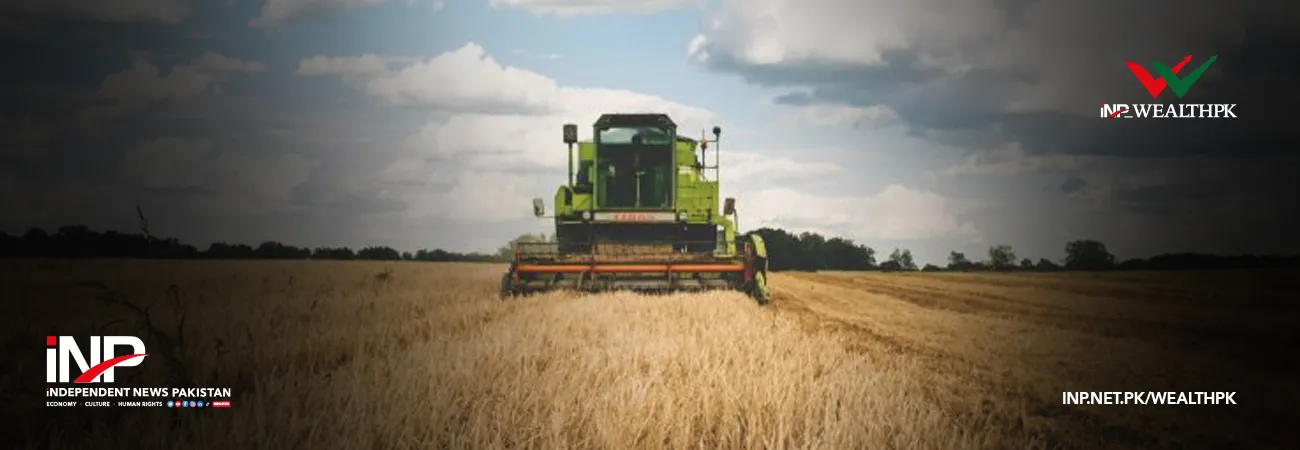INP-WealthPk
Ahmed Khan Malik
The Sindh government plans to increase public investment in crops, livestock and fisheries to tap the potential of these sectors. "The increase in investment will be subject to certain measures and actions to achieve desired results," Hassan Siddiqui, Director Policy Implementation in the Planning Board, told WealthPK. He said that before allocations were increased, the departments concerned would review and revise their portfolios to align ongoing activities, projects and programmes with the new policy and strengthen their planning and expenditure systems to ensure they could absorb additional funding. He said the departments would need to undertake a spending review to assess the effectiveness and efficiency of their regular activities, particularly the use of large numbers of support staff, and prepare restructuring and human development plans.
Sindh is the second largest province of Pakistan after the Punjab in terms of population, contribution to GDP, employment and exports. The increased population growth and urbanisation will require increased food and raw materials, which the agriculture sector has to provide at a reasonable cost. In terms of agriculture, Sindh accounts for 18% of the country's land area, 16% of its total cropped area, and contributes about 23% to national agriculture value addition. However, the sector has not performed to its potential. Sindh also has a large livestock population, and livestock production accounts for over half of agriculture's GDP. There are 18.1 million cattle and buffaloes, which are mainly kept for milk. Most rural households, including the landless, keep a buffalo, a cow or a goat. These are mostly managed by women. Milk from these animals is a critical source of food, and in particular of protein.
For many families, it is also their main asset, which can be sold in times of urgent cash requirements. There is also a rapidly expanding peri-urban population of cattle, mainly concentrated in cattle colonies near the big cities, to supply milk and meat to urban consumers. Important by-products from cattle are meat and hides. There are also almost 21 million sheep and goats, many of which are around Badin and Thatta districts, where they are grazed on arid and semi-arid land. Sheep and goats are mainly kept for meat and many are sold during the Eid festival or at the time of need. A number of live animals are traded informally across the borders to the west. The productivity of the cattle, sheep and goats is low and variable. "There is considerable potential to expand supply to meet rising domestic and regional demand.
This needs to be done through increasing productivity, rather than numbers, through better animal breeds, a greater focus on preventive healthcare, improved husbandry and careful range land management. Increased productivity would increase output, improve nutrition and reduce consumer prices," Saeed Jatoi, Director Sindh Agriculture Department, told WealthPK. He said that poultry had been a major success in Pakistan. "Growth has been rapid and mainly comes from the medium to large commercial farms – of which there are over 5,000 in Sindh. Due to good availability and low prices, poultry accounts for over 25% of meat consumption. In contrast, small rural poultry producers find it difficult to compete due to a high prevalence of disease and poor breeds." Jatoi said that Sindh had 350 kilometres of coastline, and coastal waters up to 20km from the coast were reserved for the exclusive use of local artisanal fishing.
"There is good potential to raise productivity of the coastal waters and coastal lands through aqua-culture and mari-culture, as well as through simple technological improvements such as use of flake ice by fishers," he said. He said that the main crops in Sindh were wheat, rice, cotton and sugarcane. "Good soils and high temperatures allow cultivation of quality cotton, while the sugar content of sugarcane in Sindh is higher than in the Punjab. A rising proportion of land is being allocated to the so-called minor crops, including fodder, oilseeds and horticulture. These crops, despite their small area relative to the traditional major crops, make up a large and growing proportion of the gross value of production. Sindh produces fruits and vegetables in large quantities, including mango, banana, dates, onion and red chillies."
Credit: INP-WealthPk




